
Giovanni Michelotti was one of the most prolific designers of sports cars in the 20th century. His notable contributions were for Ferrari, Lancia, Maserati and Triumph marques. He was also associated with truck designs for Leyland Motors, and with designs for British Leyland after the merger of Leyland and BMC.

ASA was an Italian automobile manufacturer active from 1961 to 1969, who is known for manufacturing the ASA 1000 GT. This car was developed by Ferrari engineers in the late 1950s as a less expensive, compact alternative to existing Ferrari GT cars. ASA used inline-four and straight-six engines derived from the "250" 3-litre V12 designed by Gioacchino Colombo. The chassis was developed by Giotto Bizzarrini and was derived from the tubular frame chassis of the 250 GTO.

The Ferrari 275 is a series of front-engined V12-powered grand touring automobiles with two-seater coupé and spider bodies produced by Ferrari between 1964 and 1968. The first 275 series cars were powered by a 3.3 L (3286 cc) overhead camshaft Colombo 60° V12 engine producing 260–320 hp (190–240 kW). An updated 275 GTB/4 was introduced in 1966, with a revised four overhead camshaft engine producing 300 hp (220 kW). The 275 series were the first road-going Ferraris equipped with a transaxle and independent rear suspension.

The Ferrari Daytona is a two-seat grand tourer produced by Ferrari from 1968 to 1973. It was introduced at the Paris Auto Salon in 1968 to replace the 275 GTB/4, and featured the 275's Colombo V12 bored-out to 4,390 cc. It was offered in berlinetta and spyder forms. The car came in two variants: the 365 GTB/4 coupe, and the 365 GTS/4 convertible.

Peter John Collins was a British racing driver. He was killed in the 1958 German Grand Prix, just weeks after winning the RAC British Grand Prix. He started his career as a 17-year-old in 1949, impressing in Formula 3 races, finishing third in the 1951 Autosport National Formula 3 Championship.

Paul Richard "Richie" Ginther was a racecar driver from the United States. During a varied career, the 1965 Mexican Grand Prix saw Ginther take Honda's first Grand Prix victory, a victory which would also prove to be Ginther's only win in Formula One. Ginther competed in 54 World Championship Formula One Grand Prix races and numerous other non-Championship F1 events.
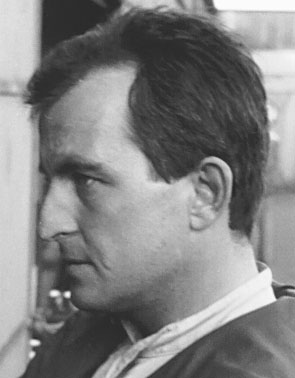
Ludovico Scarfiotti was a Formula One and sports car driver from Italy. Just prior to entering Formula One, he won the 1963 24 Hours of Le Mans for Ferrari. He later participated in 12 World Championship Formula One grands prix, and many non-championship races. He won one World Championship race, and scored a total of 17 championship points. A motor sports competitor for a decade, Scarfiotti won the 1962 and 1965 European Hillclimb Championship. He was proclaimed Italy's best driver in both 1962 and 1965.
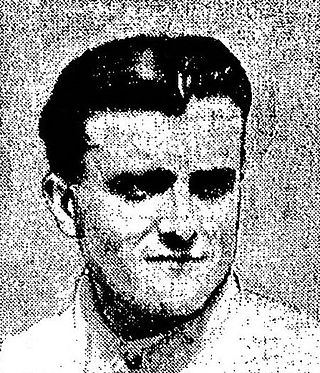
Luigi Chinetti was an Italian-born racecar driver, who emigrated to the United States during World War II. He drove in 12 consecutive 24 Hours of Le Mans races, taking three outright wins there and taking two more at the Spa 24 Hours race. Chinetti owned the North American Racing Team, which successfully ran privateer Ferraris in sports car and Formula One races. For many years he was the exclusive American importer of Ferrari automobiles to the United States.
The Ferrari P was a series of Italian sports prototype racing cars produced by Ferrari during the 1960s and early 1970s.
Ferrari is an Italian company which has produced sports cars since 1947, but traces its roots back to 1929 when Enzo Ferrari formed the Scuderia Ferrari racing team.

The 1965 24 Hours of Le Mans was the 33rd Grand Prix of Endurance, and took place on 19 and 20 June 1965. It was also the twelfth round of the World Sportscar Championship.

Patrick Peter Mitchell-Thomson, 2nd Baron Selsdon won the 1949 24 Hours of Le Mans together with Luigi Chinetti in a Ferrari 166 MM.

Rosso corsa is the red international motor racing colour of cars entered by teams from Italy.

Peter Harry Sutcliffe, a British textile manufacturer from Huddersfield, was active in sports car racing until 1967. Between 1959 and 1967 he won the 1964 Prix de Paris at the Autodrome de Linas-Montlhéry, and the 1965 Pietermaritzburg 3 hours. He raced in Aston Martins, Jaguar D-Type and E types, Shelby Cobra Daytona, Ford GT40s and works Ferrari 330P4s.

François Hubert Marie Perrodo is a French billionaire businessman, racing driver, and car collector. He is the chairman of Perenco, an oil and gas company with operations in 14 countries, which was founded by his father. In October 2023, Forbes estimated his family to be worth US$10 billion.
Neri and Bonacini, also known as Nembo, was a small carrozzeria and mechanic shop based in Modena, Italy, active from the late 1950s to around 1967. Founded and run by Giorgio Neri and Luciano Bonacini, the shop worked on and produced bodies for Ferrari, Lamborghini and Maserati road and race cars, both in an official capacity for those manufacturers and for private owners. Their best known projects are the Ferrari 250 GT-based Nembo spiders and the Lamborghini 400GT Monza. Neri and Bonacini also designed a car under their own name, the Neri and Bonacini Studio GT Due Litri. Two prototypes of this car were made between 1966 and 1968 but it never entered series production. The shop closed around 1967 when Bonacini went to work for De Tomaso and Neri started his own shop, Motors-World-Machines (MWM).
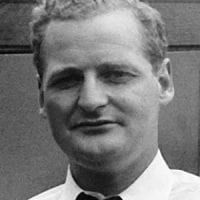
Thomas Lionel Howard Cole, Jr., also known as Tom Cole or Tommy Cole, was a British-American racing driver and co-creator of the Cadillac-Allard sports car. Afflicted by childhood polio, he served in non-combat roles in World War II, and then took up rallying, hillclimbing, and sports car racing full-time after the war. He died, aged 31, in a crash while driving in the 1953 24 Hours of Le Mans.
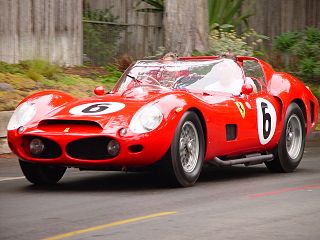
The Ferrari 330 TRI/LM Spyder is a unique racing sports car purpose-built in 1962 by Ferrari to achieve victory at the 24 Hours of Le Mans. It was the last Ferrari racing sports car with a front-mounted engine and the last of a series of Ferrari race cars known as the Testa Rossas. The "I" in its designation indicates that the car has an independent rear suspension.
José Behra was a French racing driver and rally driver.
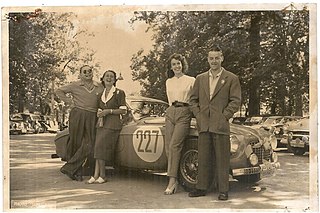
Pierre "Pagnibon" Boncompagni was a French racing driver, best remembered for winning the 1951 Tour de France Automobile.


















